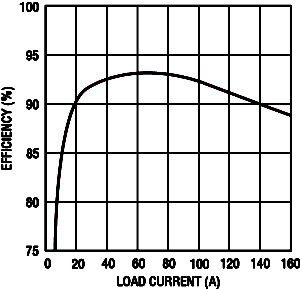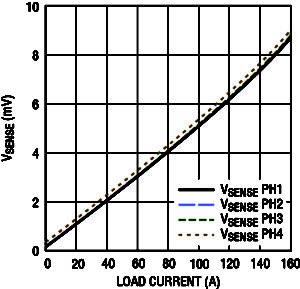The increasing scalability being found in the next generation of routers and switches commonly found in telecom and datacom systems has exerted pressure on power supply manufactures to provide smart and flexible high efficiency solutions that can be scaled across multiple platforms. Bruce Haug, senior product marketing engineer, Linear Technology, tells us more
System designers will frequently have several variations of a base architecture, allowing them to offer high, medium and low-end systems, each with different feature sets. Examples of device types that can be added, removed or sized according to system needs are; content-addressable memory (CAM), ternary content-addressable memory (TCAM), application specific integrated circuits (ASICs), full custom silicon and field-programmable gate arrays (FPGAs).

CAM is often described as the opposite of random access memory (RAM) but is much faster. To retrieve data on RAM, the operating system must provide the memory address where the data is stored. Data stored on CAM can be accessed by performing a query for the content itself. Due to its parallel nature, CAM (and by extension TCAM) is much faster than RAM. However, it is not widely used in most electronics because it is expensive to build, consumes a lot of power and generates a high level of heat that must be dissipated. In addition, CAM’s and TCAM’s significantly increase packet lookup speed. In most cases, any switch capable of forwarding ethernet frames at gigabit line-speed is using CAMs and TCAM’s for lookups.
Scalability
The amount of CAMs and TCAMs allocated to a particular switch or router depends on how a networking company positions it’s offering of low, medium or high-end systems. The more expensive systems will normally have sufficient CAM’s and TCAM’s to support the highest speeds, fastest look ups and highest throughputs. However, some consumers won’t want to purchase a high end router unless they can justify the added cost. So there is a need to offer multiple platforms with different levels of functionality and price so it would be convenient if there were a DC/DC converter that could be scaled across different power levels and number of outputs to support multiple platforms.
Existing solutions routinely use a multiphase design, but with only one or two outputs. If there are more than two high current loads, users need to resort in using multiple controllers, which increases solution size, design complexity and cost. Furthermore, some of the existing power solutions require specialised power train devices that are not compatible with the standard DrMOS or power block devices. A new DC/DC controller from Linear Technology address’ these needs, and allows scalability across multiple platforms.

A smart IC solution with scalability
Linear’s LTC7851/-1 is a multiphase synchronous voltage mode step-down controller that gives users the flexibility to choose from one, two, three or four outputs and can deliver up to 40 amps per output depending on the choice of external components. All four phases can be combined to provide 160A for a core supply as an example, or provide four independent outputs. The LTC7851/-1 works with DrMOS, power blocks as well as discrete N-channel MOSFETs plus associated gate drivers for the power train devices, enabling flexible design configurations. Up to 12 phases with three IC’s can be clocked 30 degrees out-of-phase for very high currents exceeding 300A.
Moreover, the LTC7851/-1’s internal auxiliary current share loop equalises current between phases when paralleled, enabling accurate current sharing between phases across multiple ICs, both in steady state and during a transient event. This not only mitigates one channel carrying too much load current, but also eases the thermal design. It operates with a VCC supply voltage from 3V to 5.5V and is designed for step-down conversion from an input voltage of 3V to 27V. It produces one to four independent output voltages ranging from 0.6V to 5V. The LTC7851-1 is similar to the LTC7851, but with a lower current sense amplifier gain, ideal for power train applications using DrMOS with internal current sense.
Efficiency
The LTC7851 efficiency curve in Figure 2 is representative of the Figure 1 circuit schematic and is shown with a 12V input voltage stepping down to 0.95V at up to 160amp output current. Efficiencies of up to 94 per cent can be achieved.
Current balance
When multiple LTC7851/-1’s phases are paralleled to drive a common load, accurate output current sharing is essential to achieve optimal performance and efficiency. Otherwise, if one phase is delivering more current than another, the temperature between the two phases will be different, and that would translate into higher switch RDS(ON), lower efficiency, and higher ripple voltage. A mismatch of even a small amount here can greatly diminish the total power available in a multi-phase design.
The LTC7851/-1 incorporates an auxiliary current sharing loop, where the inductor current for each phase is sampled, adjusted and balanced.

Transient response
The LTC7851s onboard error amplifiers have high bandwidth, high DC gain, low offset and low output impedance. Their bandwidth, when combined with high switching frequencies and low-value inductors, allows the compensation network to be optimised for high control loop crossover frequencies and excellent step-load transient response. In addition, the LTC7851 achieves outstanding line transient response using a feedforward correction scheme which instantaneously adjusts the duty cycle to compensate for changes in input voltage, significantly reducing output overshoot and undershoot.
Conclusion
As router and switch designs become more complex, power system designers can now create designs at different power levels using a single DC/DC controller that scales across multiple platforms. The ability to select from one to twelve phases, at up to 40A/phase along with using DrMOS or power blocks in the power train, allows the LTC7851/-1 to provide a highly flexible solution for the most demanding communication and networking products.
 CIE Components in Electronics
CIE Components in Electronics



